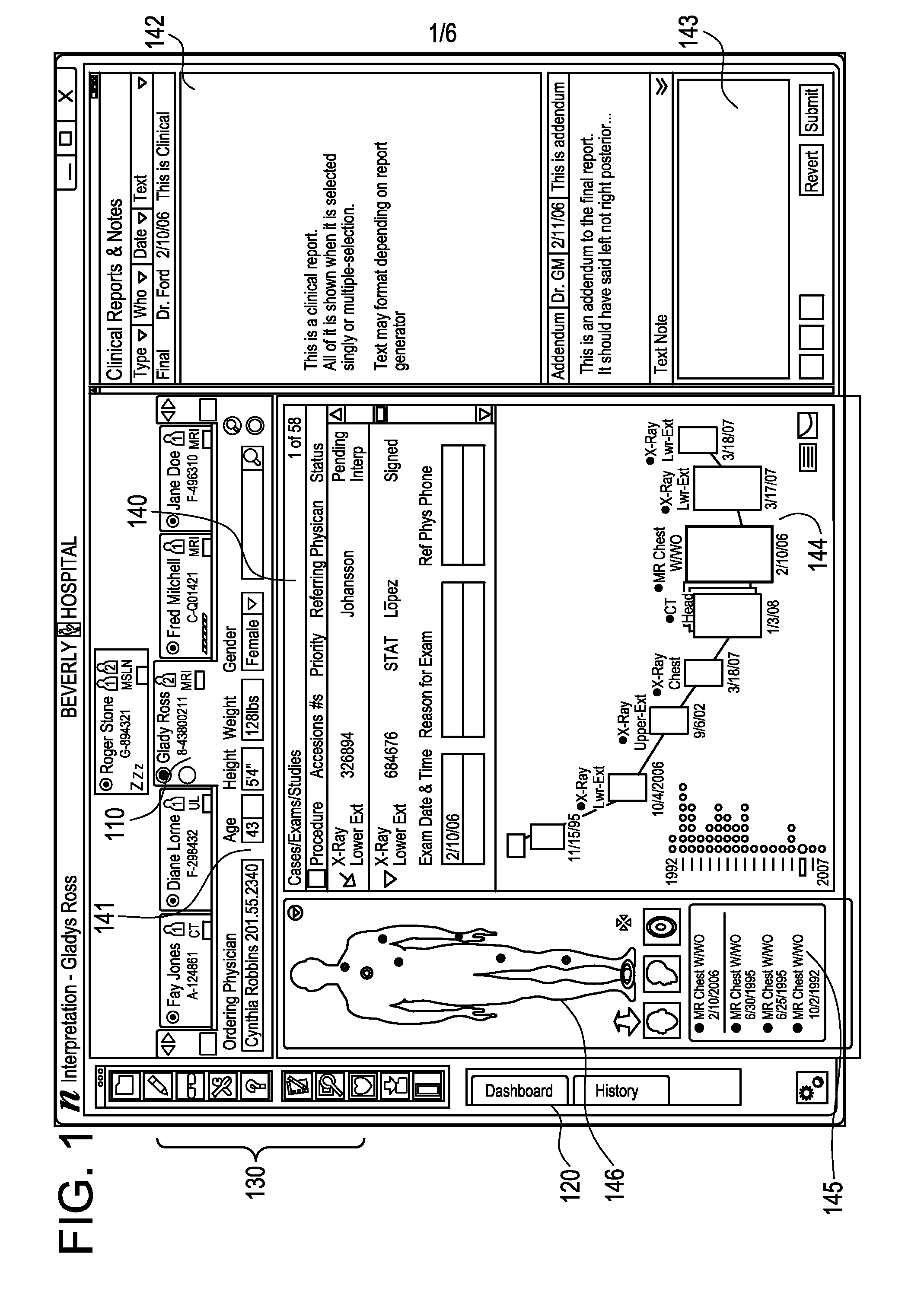Electronic health record timeline and the human figure
- Summary
- Abstract
- Description
- Claims
- Application Information
AI Technical Summary
Benefits of technology
Problems solved by technology
Method used
Image
Examples
Embodiment Construction
[0022]Certain embodiments provide a single view of a patient's full medical record across specialties in an aggregate, graphical format that enables a user to drill down for additional information and to determine severity within an anatomic structure for a patient over time.
[0023]In prior systems, users have had difficulty in viewing patient's record even when all data is present. There is no facility for determining severity of chronic patient issues. It has not been easy to see, in a single view, a patient's full health record across specialties. Even when a patient's clinical data is provided, most electronic medical records (“EMRs”) or electronic health records (“EHRs”) provide separate sections for radiology, cardiology, labs, etc., that are not aggregated in a single view so that you know immediately what's going on with the patient. Prior systems failed to provide a capability to determine a severity within an anatomic structure for a patient by time, for example.
[0024]Certa...
PUM
 Login to View More
Login to View More Abstract
Description
Claims
Application Information
 Login to View More
Login to View More - R&D
- Intellectual Property
- Life Sciences
- Materials
- Tech Scout
- Unparalleled Data Quality
- Higher Quality Content
- 60% Fewer Hallucinations
Browse by: Latest US Patents, China's latest patents, Technical Efficacy Thesaurus, Application Domain, Technology Topic, Popular Technical Reports.
© 2025 PatSnap. All rights reserved.Legal|Privacy policy|Modern Slavery Act Transparency Statement|Sitemap|About US| Contact US: help@patsnap.com



